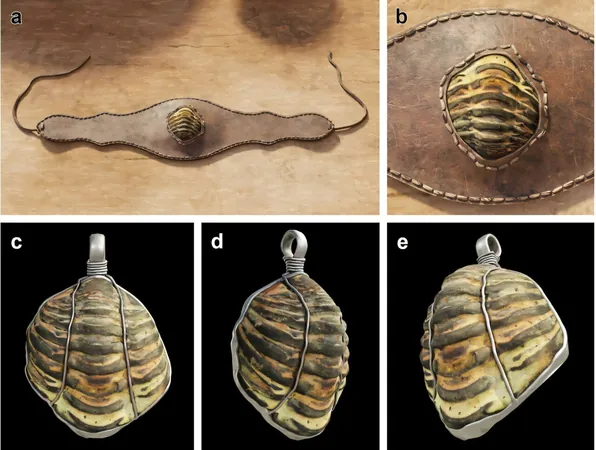
Revolutionary Model Unveils Soil Microbiome's Secrets to Surviving Environmental Changes
2025-07-16
Author: Wei Ling
Unlocking the Mysteries of Soil Metabolism
Just like any living organism, soil boasts its own intricate metabolism. The vibrant ecosystem beneath our feet, teeming with plants, worms, insects, and most crucially, microorganisms, breaks down organic matter, produces nutrients, and processes various materials, allowing the soil to thrive.
At the heart of these processes lies the soil microbiome, a labyrinth of thousands of microbial species and their countless interactions. However, understanding how these communities respond to shifts in environmental conditions—like temperature, moisture, acidity, and nutrient variations—has proven to be a formidable challenge.
A Breakthrough Model from the University of Chicago
In a groundbreaking study from the University of Chicago, researchers have unveiled a surprisingly simple mathematical model that can predict how soil responds to environmental changes. By examining just two key variables, they have discovered that shifts in pH levels lead to three distinct metabolic states within the microbial community.
Published in the prestigious journal Nature, this research demonstrates that a mathematical approach can demystify the complexity of soil ecosystems, enabling scientists to forecast how soil metabolism adapts to changes—a crucial step toward improving agriculture and restoring ecosystems.
The Herculean Research Effort
This study is the brainchild of Kiseok Lee, a dedicated graduate student, who meticulously sampled 20 diverse soils from Cook Agronomy Farm in Pullman, Washington. Through precise lab manipulations of pH levels, he conducted an astonishing 1,500 microcosm experiments.
Understanding pH is critical, as it significantly influences the microbial species present, their metabolic functions, and soil chemistry. The researchers aimed to explore how changing pH levels impacted anaerobic nitrate respiration, a vital process that affects soil health and agricultural productivity.
The Power of Simplified Modeling
In collaboration with esteemed colleagues from Northwestern University and Washington University in St. Louis, Lee and his team devised a model that encapsulates the metabolic behavior of the soil samples. They identified three consistent regimes corresponding to different pH levels:
1. **Acidic Death Regime**: Significant acidity led to the decline of functional microbial biomass. 2. **Nutrient-Limiting Regime**: Moderate pH shifts constrained nitrate metabolism due to insufficient available nutrients. 3. **Resurgent Growth Regime**: Shifts toward alkaline conditions triggered a rapid proliferation of less common microbes.
This finding is remarkable; despite the underlying complexity of microbial interactions, simple patterns emerge that allow for effective predictions of ecosystem behavior.
Practical Applications of the Model
Armed with this new understanding of soil microbiomes, scientists can craft more effective interventions. For instance, if nitrogen runoff from farming affects local waterways, adjusting soil pH could mitigate nitrate levels, ultimately reducing harmful algae blooms.
The researchers believe this modeling technique could extend beyond soil studies to address other environmental factors. Lee notes that focusing on community resilience could yield insights into how various microbial systems respond to shifts in temperature, pH, or salinity.
Conclusion: A New Era for Soil Research
Ultimately, this innovative approach not only provides a clearer picture of soil microbiomes but also equips us with the tools to anticipate their responses to future environmental changes. The implications for sustainable farming and ecosystem restoration are profound, paving the way for a healthier planet.


 Brasil (PT)
Brasil (PT)
 Canada (EN)
Canada (EN)
 Chile (ES)
Chile (ES)
 Česko (CS)
Česko (CS)
 대한민국 (KO)
대한민국 (KO)
 España (ES)
España (ES)
 France (FR)
France (FR)
 Hong Kong (EN)
Hong Kong (EN)
 Italia (IT)
Italia (IT)
 日本 (JA)
日本 (JA)
 Magyarország (HU)
Magyarország (HU)
 Norge (NO)
Norge (NO)
 Polska (PL)
Polska (PL)
 Schweiz (DE)
Schweiz (DE)
 Singapore (EN)
Singapore (EN)
 Sverige (SV)
Sverige (SV)
 Suomi (FI)
Suomi (FI)
 Türkiye (TR)
Türkiye (TR)
 الإمارات العربية المتحدة (AR)
الإمارات العربية المتحدة (AR)